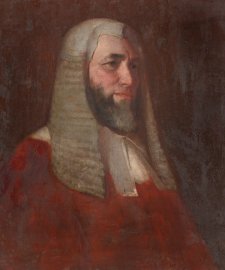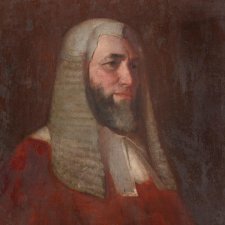- About us
- Support the Gallery
- Venue hire
- Publications
- Research library
- Organisation chart
- Employment
- Contact us
- Make a booking
- Onsite programs
- Online programs
- School visit information
- Learning resources
- Little Darlings
- Professional learning
Richard Windeyer (1806–1847), barrister and politician, came to New South Wales with his wife, Maria, and infant son, William Charles, in 1835. In Sydney, he established a successful practice and was considered ‘a barrister of superior abilities’ and eloquence. He also acquired land in the Hunter Valley and at his Tomago estate engaged in winegrowing along with the cultivation of crops including wheat and sugar cane. Elected to the first New South Wales Legislative Council in 1843, he advocated free trade and worked to open British markets to colonial wheat. He was also interested in education, social welfare and law reform and became a member of the Aborigines Protection Society after appearing in trials arising from the Myall Creek atrocity of 1838. An ‘able, enlightened, honest and uncompromising public man’, Richard Windeyer died from a combination of illness, overwork and financial worries at the age of forty-one.
Gift of the Windeyer family 2009. Donated through the Australian Government's Cultural Gifts Program.
Jim Windeyer (16 portraits)
Jennifer Lockhart (7 portraits)
James Lockhart (7 portraits)
Alison I. Lockhart (7 portraits)
Catherine M. Crouch (7 portraits)
Robert F. Windeyer (7 portraits)



On one level The Companion talks about the most famous and frontline Australians, but on another it tells us about ourselves.



Joanna Gilmour looks beyond the ivory face of select portrait miniatures to reveal their sitters’ true grit.



Family affections are preserved in a fine selection of intimate portraits.